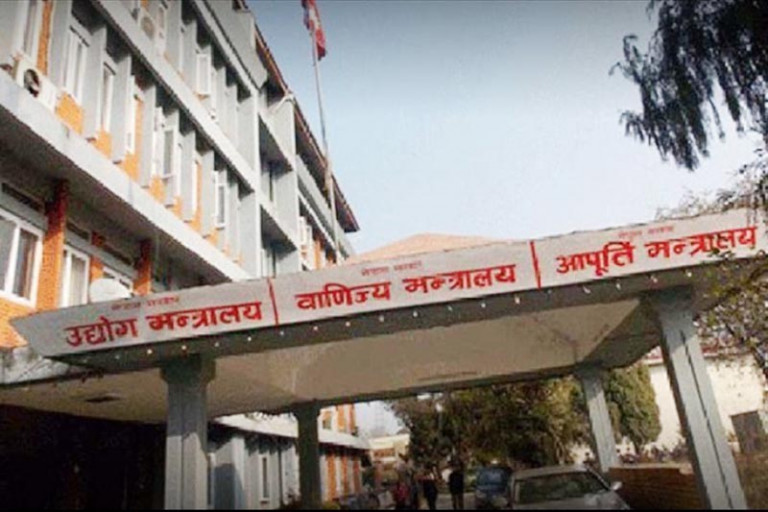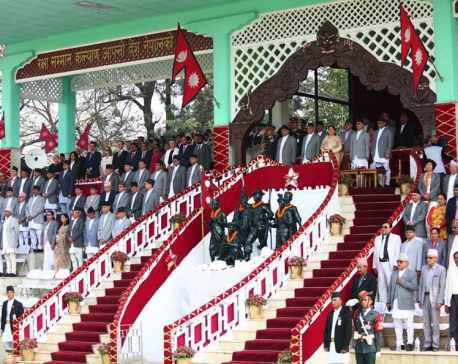
OR
Govt spending Rs 463 billion in five years for NTIS 2022 with the aim to boost exports
Published On: June 9, 2023 08:30 AM NPT By: RAJESH KHANAL

Similar two programs earlier had failed to yield desired results, wasting state’s financial resource
KATHMANDU, June 9: The government has enforced ‘Nepal Trade Integration Strategy 2022’ allocating a hefty amount to be invested in selected exportable goods although previous two similar programs had failed to yield positive outcomes in a notable value.
Govinda Karki, joint-secretary of the Ministry of Industry, Commerce and Supplies, informed Republica that the new program is launched aiming to increase the country’s export to Rs 2 trillion in the next five years. The government has earmarked a budget of Rs 463 billion to implement the program for the stipulated time. The budget for Fiscal Year 2023/24 has also allocated Rs 40 million for the program.
Earlier, the government had implemented two editions of Nepal Integrated Trade Strategy in 2010 and 2016. The NTIS 2010 focused on the development of 12 goods and seven services, aiming for generating a robust revenue from selling these products abroad. And the government allocated a notable amount of money to facilitate their production as well.
With the poor performance of the businesses of majority of the goods in the lists, the government revised it in 2016. The list of products and services identified for special treatment was reduced to 12 from 19.
Lentils, honey, noodles, handmade paper, silver jewelry and iron and steel products from the list of NTIS 2010 were removed. In the service lists, health, education, engineering and hydroelectricity were dumped. Fabrics, textile and yarn, leather and footwear were added to the list, when the government revised the ambitious trade plan in 2016.
The government had launched the program to address the ballooning trade deficit of the country. To promote export of the products, the government provided a cash incentive of up to five percent of their export values. However most of the specified products in both the programs failed to yield desired outcomes.
In the NTIS 2022, the government has incorporated large cardamom, ginger, legumes, jute, tea, medicinal herbs and aromatic plants, handmade papers, rosin and turpentine, woolen carpet, jewelry and iron and steel products for the program. In addition, spices, Himalayan spring water, fruits and processed items, natural fibers, coffee, handicrafts and PPC cement have also been considered for the targeted programs.
The program has identified 13 trade related strategies. Under these, 164 areas have been mentioned for reform.
Lack of coordination among the government agencies, absence of result-based monitoring mechanisms and lack of quality products in the product lines have been blamed for the failure of the trade focused programs earlier. “The NTIS will achieve success only if the government focuses on solving problems of coordination in the implementation part along with quality enhancement and identifying potential markets for specific products,” said former commerce secretary Purushottam Ojha.
You May Like This

Govt expedites process to provide subsidized loan to startups
KATHMANDU, August 12: The government has expedited the process of providing subsidized loans to startups that have remained on hold since... Read More...

Paradox of republic
Impartiality has been one of humankind’s longest and the most elusive pursuits. Despite a variety of reforms enacted throughout history,... Read More...




Just In
- Health ministry to conduct ‘search and vaccinate’ campaign on May 13
- Indian customs releases trucks carrying Nepali tea, halted across Kakarbhitta
- Silent period for by-election to begin from midnight
- SC issues short-term interim order to govt and TU not to take immediate action against TU legal advisor Khanal
- National consultation workshop advocates to scale up nutrition smart community in Nepal
- Patan High Court issues short-term interim order to halt selection process of NTB’s CEO
- NEPSE inches up 0.15 points; daily turnover increases to Rs 2.53 billion
- Bagmati Govt mandates tri-lingual signboards in offices














Leave A Comment